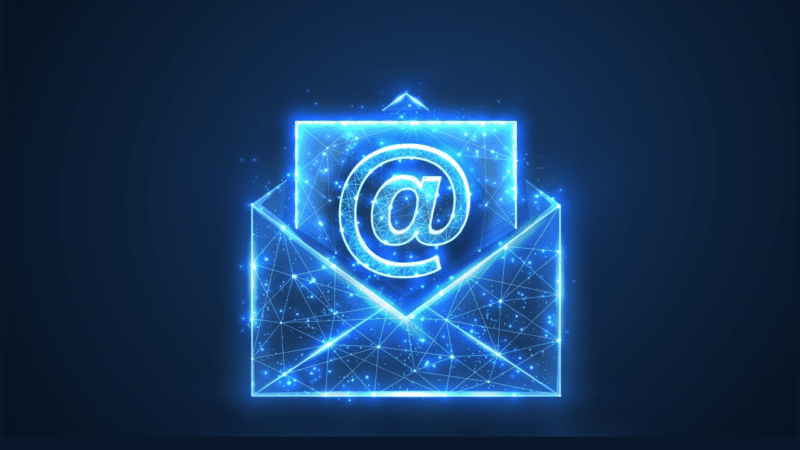
Imagine your inbox is no longer a hodgepodge of personal messages, replies, announcements, alerts and commercial messages you must scroll through endlessly. Instead, your inbox has become interactive with an Alexa-like AI agent, one that sorts and acts on your incoming emails according to a system based on your behavior in email, on websites and across the digital sphere.
Your inbox agent will percolate up the messages you are most interested in, such as an email featuring a product you browsed on a website. It would know the product was something you would want to discuss with your spouse or partner before buying; thus, you’d like to see (or hear) that email. And it’s doing all this while you make your first coffee of the day or take the dog for a walk.
Want to email your cousin? Dictate it to your AI agent, which can send it verbatim or rewrite it based on random thoughts. Need a reminder for today? Ask the agent to add it to your to-do list or to reach out and schedule a time to connect.
AI agents will very soon reorganize how people interact with data. Your inbox will have an assistant you trust to streamline your communication and organization. Email becomes a conversation, not a task of weeding through multiple tabs and a mountain of emails. That change will require a marketing transformation across all channels.
Is this happening already?
We aren’t there yet, but I can see it. I’ve talked with people who say they get greater results when they treat their AI agents or LLMs like people during the prompting process.
Just like with humans, AI works better — delivers more accurate and fully developed results — when we have conversations with it instead of barking orders. When we name our ChatGPT bots, say “please” and “thank you,” and compliment them when they follow briefings accurately, and they start to respond in kind.*
My email friend Dela Quist calls this “prompt psychology,” which is “the art of shaping human-AI interactions through tone, trust and emotional awareness.”
Let’s extrapolate from this and fast-forward a couple of years. If a conversation with an AI agent can help us solve a problem, we could extend that into our inbox activities by setting parameters and connecting behavior signals to pull in data that would let AI sort through my messages.
With Gmail, for example, Google already has a graph of all of this information, and I can activate that to prioritize my inbox. It’s not just the information in the inbox; it’s the information on everything else that I’m interacting with digitally.
Dig deeper: How generative AI is impacting email marketing software
Will people accept it?
You might think, “Ryan, you’re going all Rod Serling on us right now. It sounds like a ‘Twilight Zone’ episode.” I get that. It is a new way of thinking about and using the inbox.
This inbox transformation is not happening today. The technology isn’t robust enough — yet. When it is, will users be willing to give an AI agent this much control?
This new inbox format isn’t the same as interactive email, like AMP for Email, where you could complete a transaction in the body of an email message without going to the website.
That just breaks the definition of how the consumer understands email. An email is an email. It lives in your inbox. A shopping cart is a cart that lives on a website. Converting in the email hasn’t taken off here in the U.S., and if it did, I don’t think it would disrupt the technology as much as the AI agent I envision.
When I talk about using AI to redefine the inbox, I mean a transformation that changes email from a static list to an interactive guide reflecting you and your life. Something you can breeze through without endless scrolling, something that accomplishes tasks like confirming meetings based on data from your calendars and so much more.
Will we trust the technology?
Doing this requires trusting the technology, the brands and the people I interact with via email. It also involves trusting the agent as a partner and a guide. That granting of control is akin to the controls that I’ve given in other areas, but over time, it will escalate the control we give to technology for our personal lives.
This inbox transformation will also change how AI affects the email world. For example, AI could soon start to play a larger role in deliverability if it’s not already.
Inbox providers easing people along the AI adoption path will lay the foundation for this evolution. In the next three to five years, they might ease people into AI with lower control levels.
Will people like it? If done slow enough. People hated tabs when it launched. Now? If I don’t have them, my inbox is insane. Change is hard, but small nudges will help adoption more than imposing wholesale change.
Dig deeper: AI and email marketing: All hype or real game-changer?
How do I work with this?
You don’t have to do anything right now, but now is a good time to start thinking about where email will go and what could happen in the near term.
Do you know enough about email technology and what’s possible right now? Can you use that information to imagine what could come down the pike? That’s a CEO-level skill. Effective CEOs can envision what’s happening and move chess pieces around to achieve goals or shift gears to solve unexpected problems like marketing in an economy destabilized by tariffs.
Your CEO might not care right now about where email is going, but you, as the CEO of email, should anticipate what could happen and how the company can be in the best position to take advantage of it.
Or, think of yourself as a reincarnation of Michael Corleone from the “Godfather” book and films (but only the first two). He synthesized his knowledge of family relationships and loyalties with relevant third-party information to identify a traitor. That’s some strategic play!
Your task isn’t that grim, but it still involves the health of your email program. Two or three years ago, most of us had no idea that providers like Gmail, Apple Mail or Yahoo Mail would develop rules changing our inbox preheaders and altering in-message content with AI-driven summaries. Here we are today, strategizing against the email client’s further erosion of control.
Build relationships, not just sales targets
The effect of an interactive, AI-driven inbox will depend on customers’ relationships with the brands they allow into the inbox. In a strong relationship, any change in the inbox structure or behavior or any effects of that change should be positive.
However, if all your customers ever hear from you is “Buy this,” that could relegate your emails even further into the background. An AI agent could bury them even deeper than the spam folder. Sales-based marketing will not deliver the value you need to build stronger bonds with your customers. But marketing based on relationships will.
What will the next 5 years look like for email?
The inbox experience is going to change. It won’t always be a tabbed inbox. Email and the way we consume it will change. AI will be the driving force as we seek to make the inbox more useful and less aggravating.
You probably won’t go to your boss anytime soon to say, “In five years, AI will take control of the inbox and prioritize its messages. We’ve got to work on relationship marketing now.”
But you should say, “This is coming, and it will be important. I need to elevate this. I need to view my strategies through this lens now.”
The rise of the AI-driven inbox would create a monumental change in the consumer experience. It’s not here yet, but I bet someone’s working on it.
The important thing for you is learning to read the tea leaves and discern what’s coming in the next year. Activate your curiosity. Read trend pieces like this one and others on MarTech. Go to conferences or join webinars and industry organizations where people are talking about what’s coming and how to plan for it.
I hope this column and others that will follow it will launch you on a trajectory of learning and discerning that will prepare you for email’s continued evolution.
Dig deeper: Is your email platform built for today’s email challenges?
(*Editor’s note: It also costs companies “tens of millions of dollars” in energy costs, according to Sam Altman, who calls it “money well spent.”)
The post Your next marketing challenge may be winning over the AI in charge of the customer’s inbox appeared first on MarTech.
